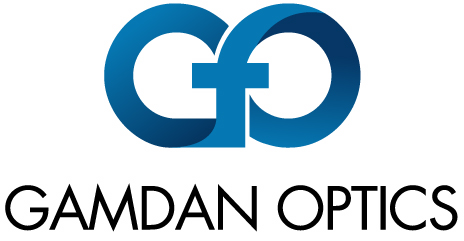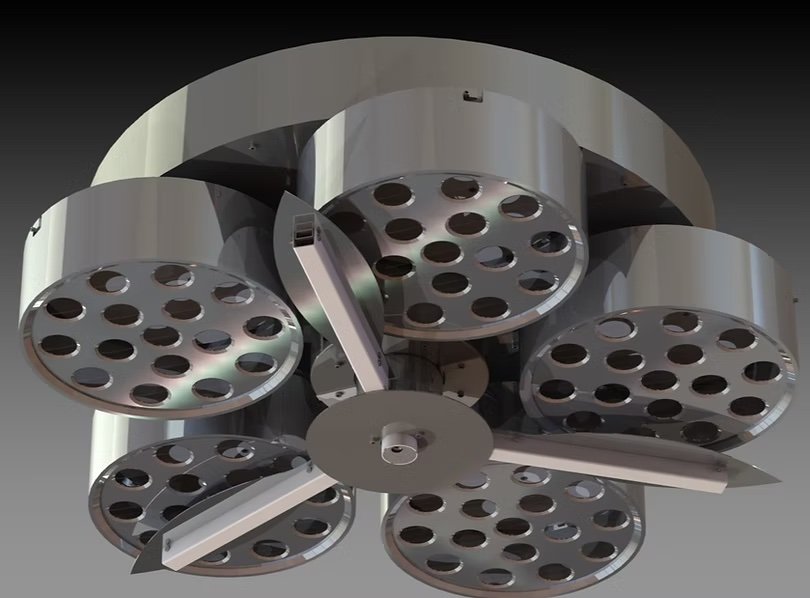NONLINEAR OPTICS COATING DESIGN
This is Part II in a series on coatings for nonlinear optics. To read Part I, click here.
The Detailed Design of the Coating
When designing a coating we must consider how many layers, how thick each layer should be, and what material should we use. Single layer coatings generally cannot provide nearly as low a reflectivities as a multi-layer coatings. However, single layer coatings are less expensive. They also often scatter less light, absorb less light, and are less prone to laser induced damage.
The details of a coating design involve the thickness and material choice for each coating layer. This affects the optical field intensity distribution within the coating, and that affects the laser induced damage threshold (LiDT). The choice of coating materials also affects the thermal expansion mismatch between the coating and the substrate, a factor that affects coating adhesion and coating cracking or crazing.
The materials used in the coating layers need to have low absorption, and this requires high purity materials. Materials that have strong bonds (large bandgaps) are less susceptible to optically induced damage than materials with weaker bonds. In multi-layer coating designs, the layers alternate between high and low refractive indices. Popular high index materials include hafnia (HfO2), alumina (Al2O3), tantalum oxide (Ta2O5), or titanium dioxide (TiO2). Silica (SiO2) is an excellent low index material.
The Substrate’s Surfaces
A bad surface cannot support a good coating. Surface preparation is critical. It must be microscopically smooth and uncontaminated. With that in mind, GAMDAN Optics provides a proprietary super polish which many customers have raved about. (read the testimonials link) Cleaning the surfaces can help, but cleaning will not remove all residues. Care must be taken during fabrication not to use a polishing compound that will leave any residue that is susceptible to optically induced damage. Extensive materials and process control during the fabrication process is critical for producing the best substrate surface prior to coating.
The processes for depositing coatings:
There are many vacuum-deposition processes, each with benefits and drawbacks. A few examples are thermally evaporated coatings, ion beam sputtered (IBS) coatings, or ion assisted deposition (IAD) of coatings. All can give high thresholds for laser induced damage. IBS gives denser coatings that are usually less permeable to chemical contaminants. IBS coatings are also very precisely applied, so they can usually be offered with tighter tolerances on reflectivity. However, IBS coatings may be more brittle, and they are almost always more expensive than evaporated coatings, which are deposited more quickly. Evaporated coatings are made by heating the coating material, often with an electron beam, in which case they are called e-beam coatings.
Figure 1: A coating chamber. Image sourced with permission: Vacuum Innovations
Most of the coating processes discussed here can be used with a range of coating materials, although not all coating technologies work well with all coating materials. For example, fluorides, such as magnesium fluoride (MgF2), are difficult to deposit with IBS.
Figure 2: A planetary rotation system holds and moves optical substrates inside a coating chamber. Image sourced with permission: Vacuum Innovations
There are many variables within each coating process. These include the temperature of the substrate being coated, the temperature of the material that is being deposited, the pressure and composition of the rarified gas in the coating chamber, the geometry of the coating chamber, the motion of the substrates within the chamber, how the chamber is cleaned between coating runs, and the rigor of the process control. Also, there have been many papers discussing post-coating treatments such as annealing or laser preconditioning of optical coatings. These steps can additionally affect the laser damage threshold of any given coated nonlinear material.
What type of coating is best at meeting specifications and avoiding damage?
There is not one single answer, but there is a lot you can learn from the extensive work that has been done in this field. For many decades, there has been a Laser Damage Symposium sponsored by the SPIE. Each year they have a different laser damage contest. The coated optical surface with the highest laser damage threshold wins! The contest’s specifications change every year to cover many different applications—the optical spectrum of interest, the pulse width, the angle of incidence, the substrate, the desired reflectivity… and so on. Through the years, a variety of coating materials and coating processes have done well. There has not been just one winner, and the materials and processes mentioned in the text above are among the usual winners. However, the surprising trend over many years is that each year the winning parts do not just edge out all the others. Second place may not be far behind, but the best results vastly surpass the worst. (see Fig. 3)
The SPIE names of all the participating coating suppliers, but the suppliers’ names are not linked with the laser damage threshold data for each sample, so it is not clear which suppliers had the best or worst results. The SPIE does report the coating process (e-beam, IBS, IAD…) and the coating materials that gave each reported laser damage result. The SPIE also does not report how consistent each supplier is, year to year.
What we do know is that for contests specifying long laser pulses (> ~10 ps up to CW) the best results are typically 100 times better than the worst in terms of damage threshold. For contests specifying short pulses (< ~1 ps) the best results are typically 10 times better than the worst. The theory is that long pulse damage is due to thermal failures at random defects in the coatings, while short pulse damage is from multi-photon ionization failures within the coating’s material. Assuming it is true that unexpected or unwanted random defects are involved in causing long-pulse damage to coating, this may help explain why long pulse results have greater variability between the best samples and the worst samples. However, 100x variability and 10x variability are both a lot. Why is there so much variability in both cases? It is probably because there are so many variables to control, as we have been discussing.
Figure 3. A wide range of results are common when doing laser induced damage testing, in this case with nanosecond 1064 nm laser pulses. Note the huge difference between the fluence levels that damage the best and the worst performing parts. Image taken from the book of the proceedings of the 2014 SPIE Laser Damage Symposium, SPIE Volume 9237, paper 9237 0N: Stolz et al., 1064-nm Fabry-Perot Transmission Filter Laser Damage Competition.
Test, test, and test!
Test the parts exactly as you expect to use them. Also test with increased power (2x or 3x often is an excellent choice) or increase the temperatures to start to learn about how parts might fail. Hint: Testing component parts is an easier and cheaper option than testing systems.
In qualifying coated parts, it can be useful to measure their laser induced damage thresholds (LIDTs) and compare them to your requirements. For a given part, the LIDT depends on laser beam characteristics such as the wavelength, pulse duration, repetition rate, etc. In certain cases, the scaling of LIDT with pulsewidth can be modeled. For example, in the nanosecond pulse regime, the scaling of LIDT goes approximately as (pulse width)½. Consequently, LIDT data at one pulsewidth can enable you to estimate the LIDT over a range of pulsewidths. There are no analogous rules for scaling with wavelength or repetition rate.
For coatings that need to last many years, it is extremely challenging to qualify a new coating. Measuring a high threshold for single-shot damage is useful, but a high LIDT can only indicate that a part won’t be damaged in a short LIDT test. What about long life? It would be desirable to perform accelerated life testing instead of testing the parts as they will be used, which could take years. However, relying on accelerated testing requires understanding the failure modes for optical damage of coated parts in your environment. Will it be coating defects, contamination, heating, diffusion, or something else? This is exceedingly hard to know, so it is even harder to quantify a scaling factor associated with accelerated reliability testing.
There is no substitute for long-term testing of different coatings from different vendors. When something works, do not change a thing! But verify that your result is reproducible, and work with the supplier(s) to verify they do not make changes to designs, materials, or processes. Periodically test samples from new production lots. Do not let a good process go bad!
In providing turn-key solutions to our customers, GAMDAN takes responsibility for the design, implementation, qualification and testing of the coatings on our substrates. GAMDAN will also track long term coating quality and yield as part of our quality commitment to our customers.
Contact us today to discuss your application needs at sales@gamdan.com
DR. WILLIAM GROSSMAN, AUTHOR
Will Grossman is a consultant retained by GAMDAN, and his role is to help our customers be more successful with nonlinear optics. His technical expertise includes laser design, nonlinear optics, and laser reliability. Dr. Grossman’s laser designs are used around the world in commercial products. More on the author can be found here.
Did you enjoy this article? Sign up to receive articles we publish straight to your email box here:




